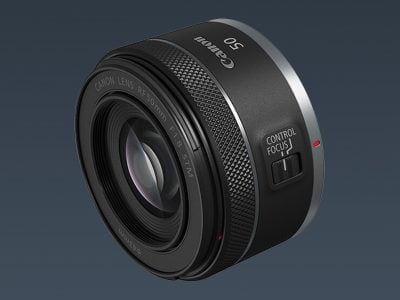Canon RF 50mm f1.8 STM review
-
-
Written by Gordon Laing
Intro
The Canon RF 50mm f1.8 STM is a low-cost standard prime lens that’s set to become a best-seller in the EOS R mirrorless system. Announced in November 2020 and costing around 200 dollars or pounds, it becomes the successor to the EF 50mm f1.8 STM launched just over five years earlier. This review is all about these budget lenses, so if you’re interested in the much fancier 1.2 model, check out my Canon RF 50mm f1.2L review – but at over 10 times the price, it’s a very different proposition. So let’s get back to budget.
Canon’s 50mm f1.8 lenses have always been enormously popular thanks to their flexibility and chance to explore shallow depth-of-field effects at a low price, and while the new RF 50mm f1.8 may cost roughly double that of the most recent EF version, it’s still the cheapest model in the RF catalogue to date while also claiming a number of improvements. To find out how it measures-up against the older EF version, I compared them side-by-side for sharpness and rendering in landscapes, portraits, close-ups and more, so keep watching to find out if the new RF lens truly deserves the honour of becoming the next nifty, thrifty fifty! Everything is in the video below, but if you prefer to read a written version, keep scrolling for the highlights!
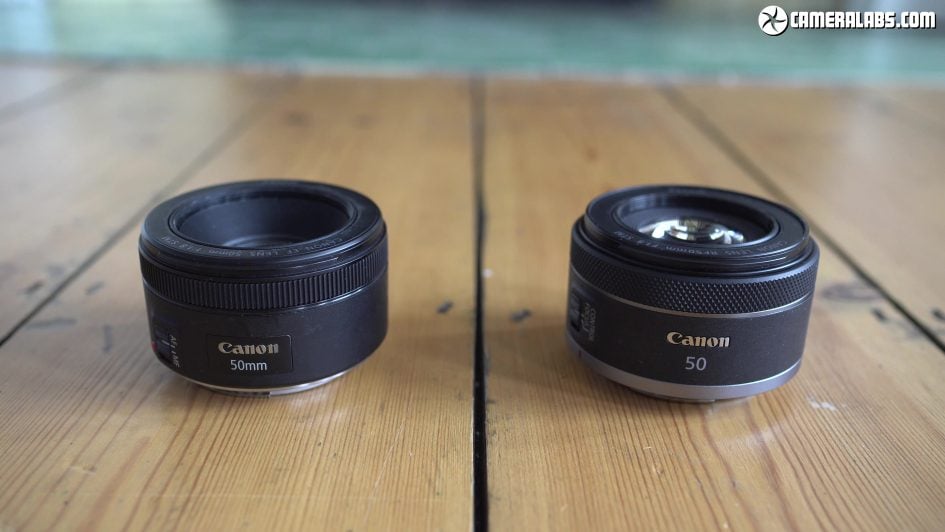
Above: here’s the older EF 50mm f1.8 STM on the left, joined by the new RF 50mm f1.8 STM on the right, and at first glance they’re similarly-sized and styled. Measuring 69x41mm and weighing 160g, the RF model is essentially the same size and weight as the EF version.
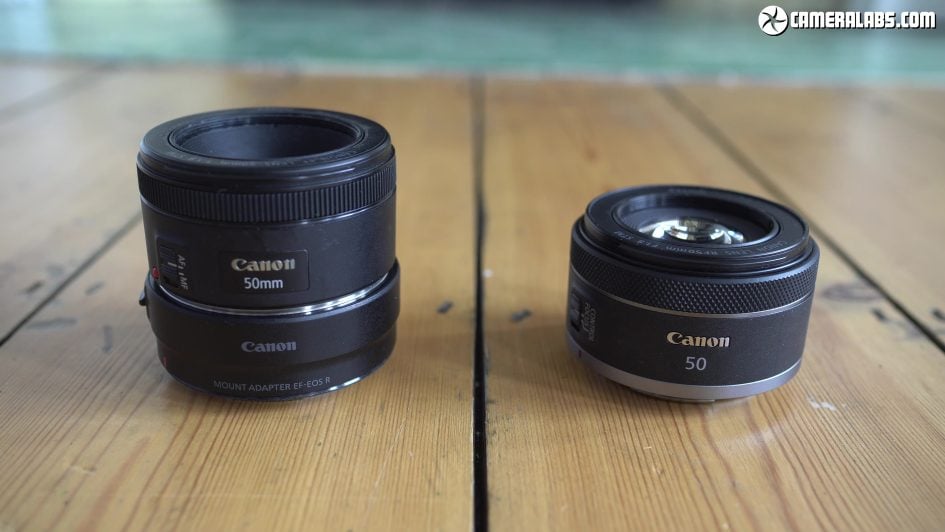
Above: but remember in order to use the older lens on a mirrorless body, you will need to add an adapter which makes it noticeably longer. As budget lenses, neither model is weather sealed and lens hoods are optional extras, but at least both have metal lens mounts.
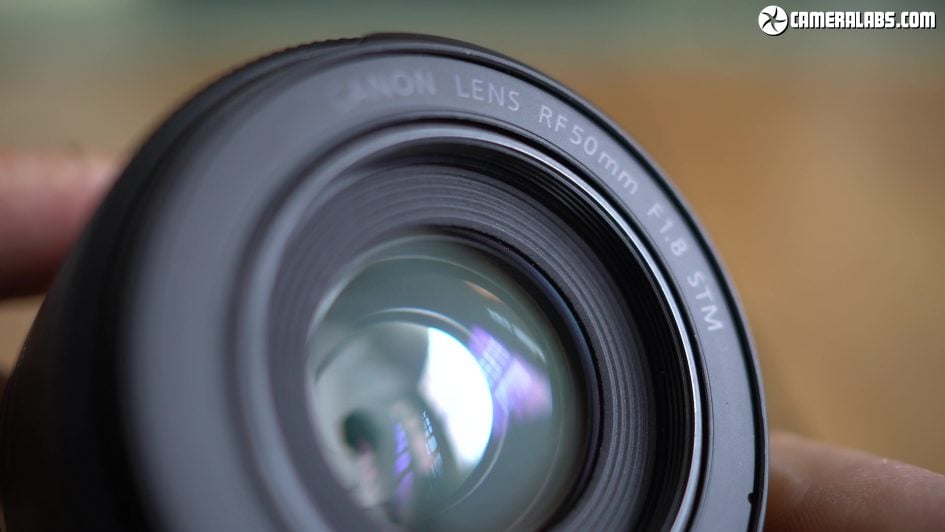
Above: The RF 50mm f1.8 STM employs six elements in five groups, has seven aperture blades and a closest focusing distance of 30cm, a little closer than the 35cm of the older EF version, but otherwise so-far so-similar. Canon has however shrunk the filter size from 49mm on the EF lens to 43mm on the RF.
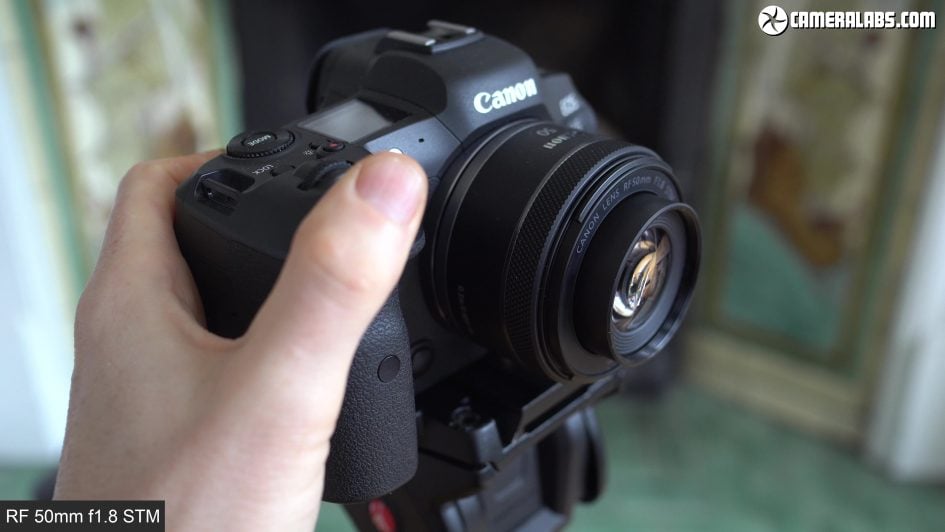
Above: Both lenses employ Canon’s STM focusing motors with internal barrels that extend and retract during use. They’re also quite audible. I’d say their speed is pretty much the same and despite occasional hesitations, the overall focusing performance looks and feels similar. You can see and hear both lenses while focusing for stills and movies in my video review at the top of the page. Since both are audible when focusing for movies, you should use external microphones where possible.
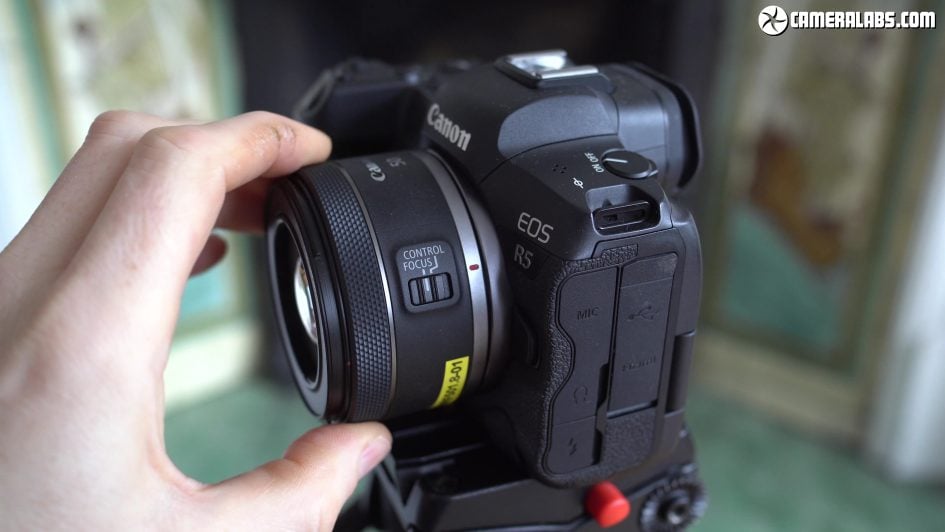
Above: In terms of controls, the RF 50mm f1.8 STM has a single ring towards the end of the barrel that turns more smoothly than the sometimes scratchy version on the EF version. Like other budget RF lenses, this ring performs double-duty with a switch setting it to either manual focus or adjusting a custom control set in the menus.
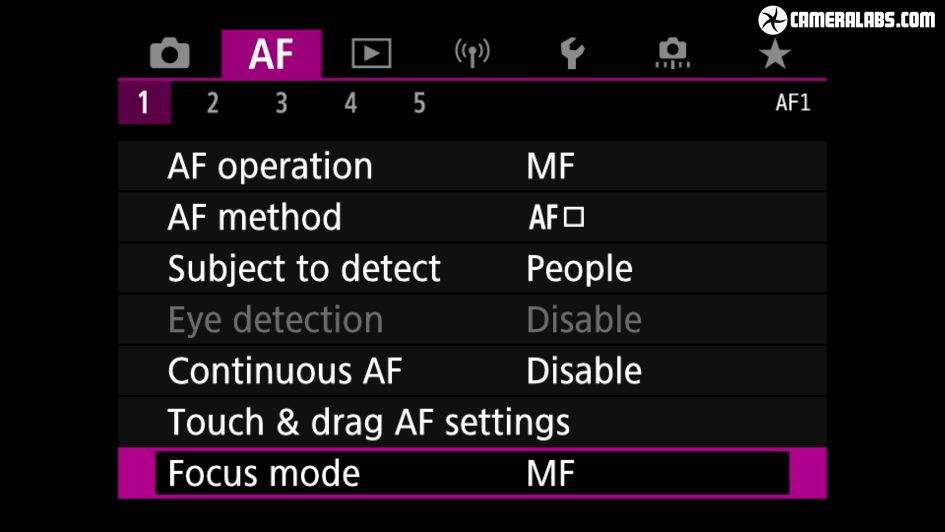
Above: If you want to manually focus this RF lens though, you can’t just set the switch to Focus and turn the ring. You’ll also need to enter the camera AF menus and switch the Focus mode from AF to MF. When you return to the live view, you’ll be greeted by focusing assistance including a distance scale, but having to enter the menus to switch between auto and manual focus can become annoying. I also can’t find a way to customise a button to directly toggle between AF and MF without first entering a menu.
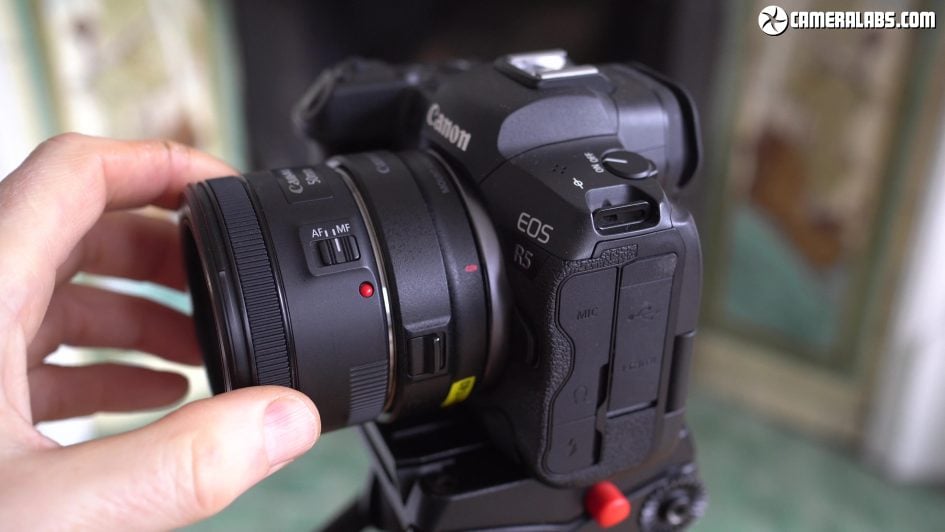
Above: Compare it to older models like the EF 50mm f1.8 STM here where a simple flick of the switch on the barrel sets it to manual focus, after which you can turn the ring to adjust the distance. EF lenses may lack the digital distance scale on the EOS R bodies but you can still employ peaking and magnified assistance.
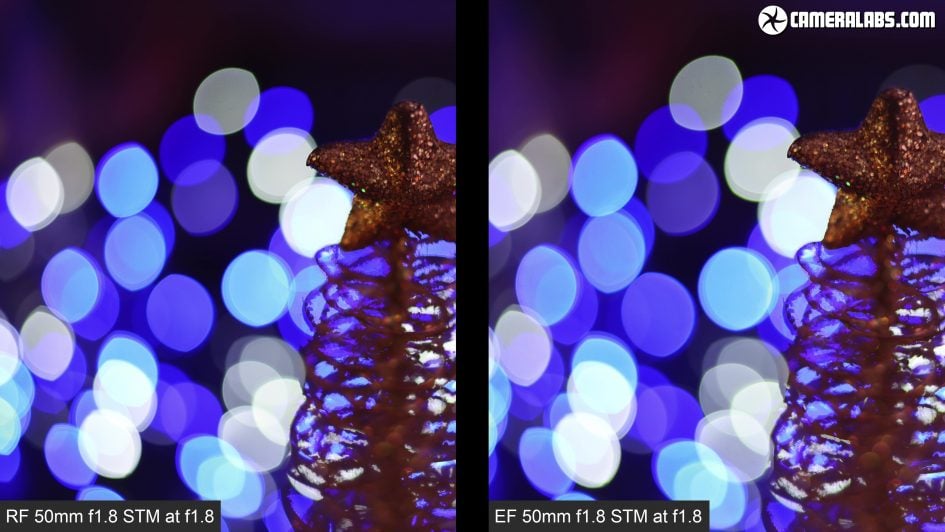
Above: Now for some image quality comparisons, starting with rendering and bokeh blobs at close range. I used an EOS R5 for all the tests in this review. As the RF 50mm f1.8 gradually closes its aperture from f1.8 to f11, the initial oval blob shapes quickly become heptagons, revealing the seven-sided shape of the aperture blade system. Here’s the RF 50mm f1.8 on the left and the EF 50mm f1.8 STM on the right, both from the same distance and at f1.8, where you can see they share essentially identical rendering styles. So at their maximum apertures, you’ll see blobs rendered as oval shapes, particularly towards the edges and corners, while the blobs themselves mostly manage to avoid onion-ring textures and harsh outlines. You may however notice the image from the RF version is a fraction tighter than the EF model, indicating either a slightly longer actual focal length, or some cropping after geometric correction. It’s not a problem, but worth mentioning as you’ll see it in my other comparisons coming-up. PS – on some bodies, videographers can set the aperture increments in the menus to very fine eighth-stop intervals if desired.
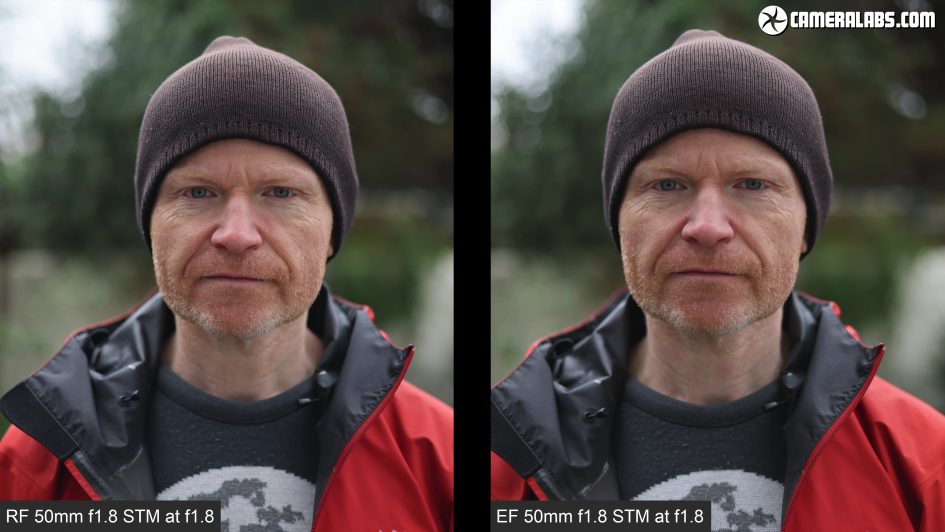
Above: Now for portraits, with the RF 50mm f1.8 STM and EF 50mm f1.8 STM, both again at f1.8 where you can see that minor difference in magnification. Place them side by side and I’d say the newer RF 50mm f1.8 on the left looks a little sharper, especially for fine detail around my eyes and beard which are a little crisper and better defined than the EF version on the right. Meanwhile the background blurring style looks pretty similar.

Above: If you prefer a slightly broader depth-of-field, here they both are again but now with their apertures closed to f2.8. Again I’d say while the background rendering is similar, the details on the RF version on the left remain a little crisper than the EF on the right. Both lenses are also ideally suited for filming pieces to camera, with Canon’s face and eye detection doing a great job at tracking and refocusing on a moving subject. Both lenses are effective for this kind of task, and while the newer RF version is a fraction more confident at times, I would be perfectly happy using face-detect AF to present a piece to camera with the older EF model.

Above: Now for a more distant landscape scene, here with Brighton Pier angled so that details go into the far corners where lenses struggle the most – don’t worry, I wasn’t drunk. Like all my images in this review, everything was taken with an EOS R5 body and you’re looking at JPEGs straight out of camera with the default settings.
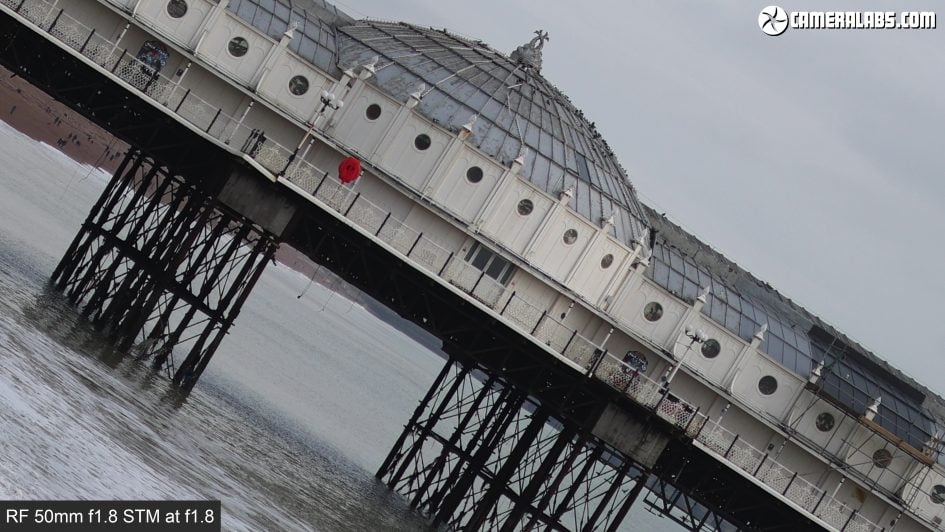
Above: Let’s start with the RF 50mm f1.8 STM wide-open at f1.8 and taking a close look at the middle of the frame shows a high level of resolved detail – even from the demanding R5 sensor. Stopping-down the lens has no significant impact on the quality in the centre, so you can be confident of good results in the central area from the get-go.

Above: Returning to the f1.8 image and moving into the extreme corners reveals softness as you might expect from a lower cost lens. There’s a fuzziness and overall lack of sharp detail.

Above: As you close the aperture though, the corners steadily improve, enjoying a visible boost in sharpness by f4, and arguably match the sharpness of the middle between f5.6 and f8. So if you want sharp details across the frame right into the far corners, I’d recommend closing the aperture to f5.6 or f8.

Above: Now back again to the RF lens wide-open at f1.8. Before comparing the performance against the EF lens though, I wanted to check one other part of the frame, roughly mid-way between the centre and the corner. Interestingly during my briefing with Canon I was told this area was now improved in sharpness over the older EF lens, and taking a close look certainly shows it to be as sharp as the middle of the frame.

Above: Likewise if you move to the opposite side you’ll see the RF 50mm f1.8 continues to deliver sharp results in this areas when wide-open. The big question then is how the RF lens compares to its EF predecessor – is it optically any better, let’s see!
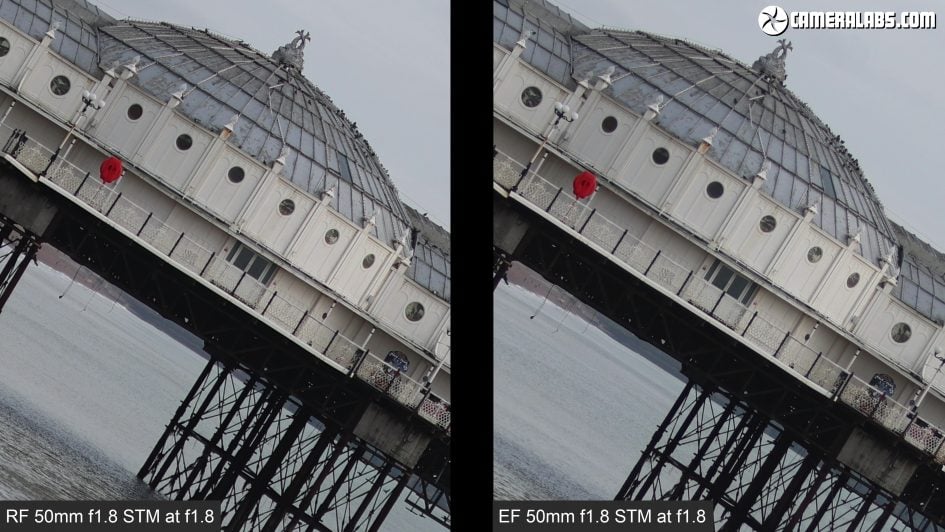
Above: first let’s take a close look in the middle of the frame with the RF on the left and the EF on the right, both at their maximum apertures, and I’d say both delivering roughly the same detail and sharpness. Neither improves in the middle as you close-down the aperture, so a draw at this point.
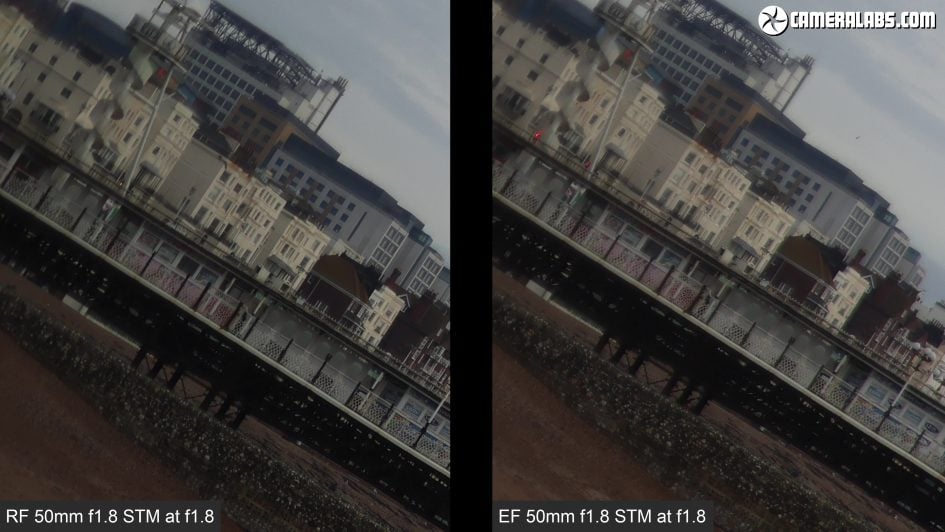
Above: Next let’s move out to the extreme corner, again with the RF on the left and the EF on the right, starting at f1.8 where both lenses look soft. As you gradually close both lenses down, there’s visible improvements, and as seen before a big improvement by f4 and arguably the maximum between f5.6 and f8. So again, so-far-so-similar.
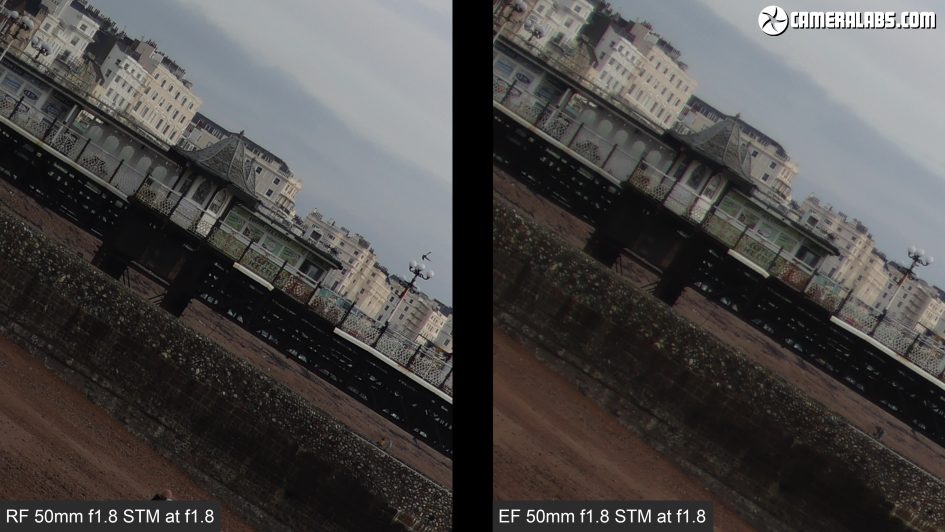
Above: But wait, if you look closely at the mid-point between the centre and the corner, you’ll notice the RF lens on the left is indeed noticeably sharper than the EF lens on the right when both are wide-open. In fact as you close down the aperture you’ll see the RF lens is pretty much delivering its maximum resolution in this area from the get-go, whereas the older EF lens has to be closed-down to at least f5.6 to match it here.
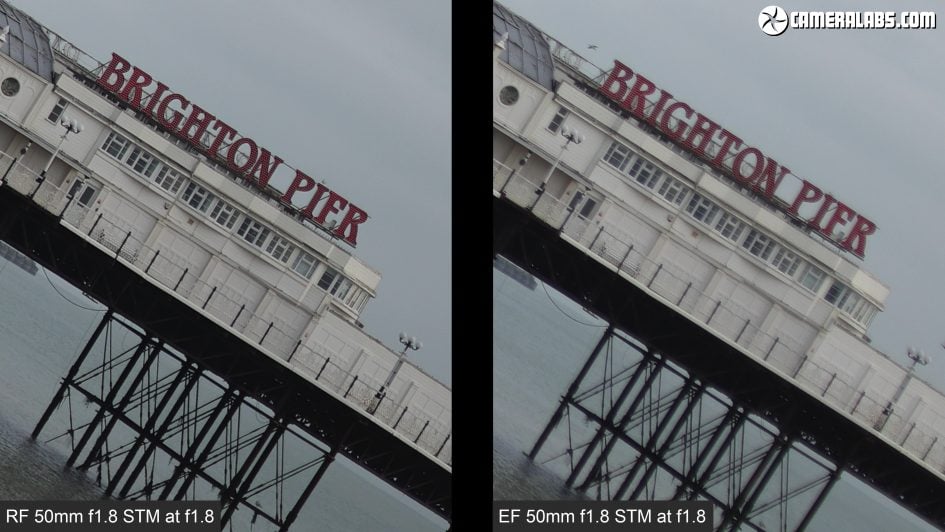
Above: to further cement Canon’s claims, here’s the view halfway between the middle and the opposite corner with both lenses at f1.8 where the improvement on the new RF version is again clearly visible.

Above: Coincidentally this greater area of sharpness on the RF lens roughly corresponds to the APSC imaging circle, so if Canon were to make an EOS R camera with an APSC sensor, or if you’re shooting in a 1.6x cropped mode, you’ll enjoy sharp results from this lens across the entire frame even at f1.8. This represents a welcome upgrade over the older EF model which quickly softens beyond the middle at f1.8.
Check prices on the Canon RF 50mm f1.8 STM at B&H, Adorama, WEX or Calument.de! Alternatively get yourself a copy of my In Camera book or treat me to a coffee! Thanks!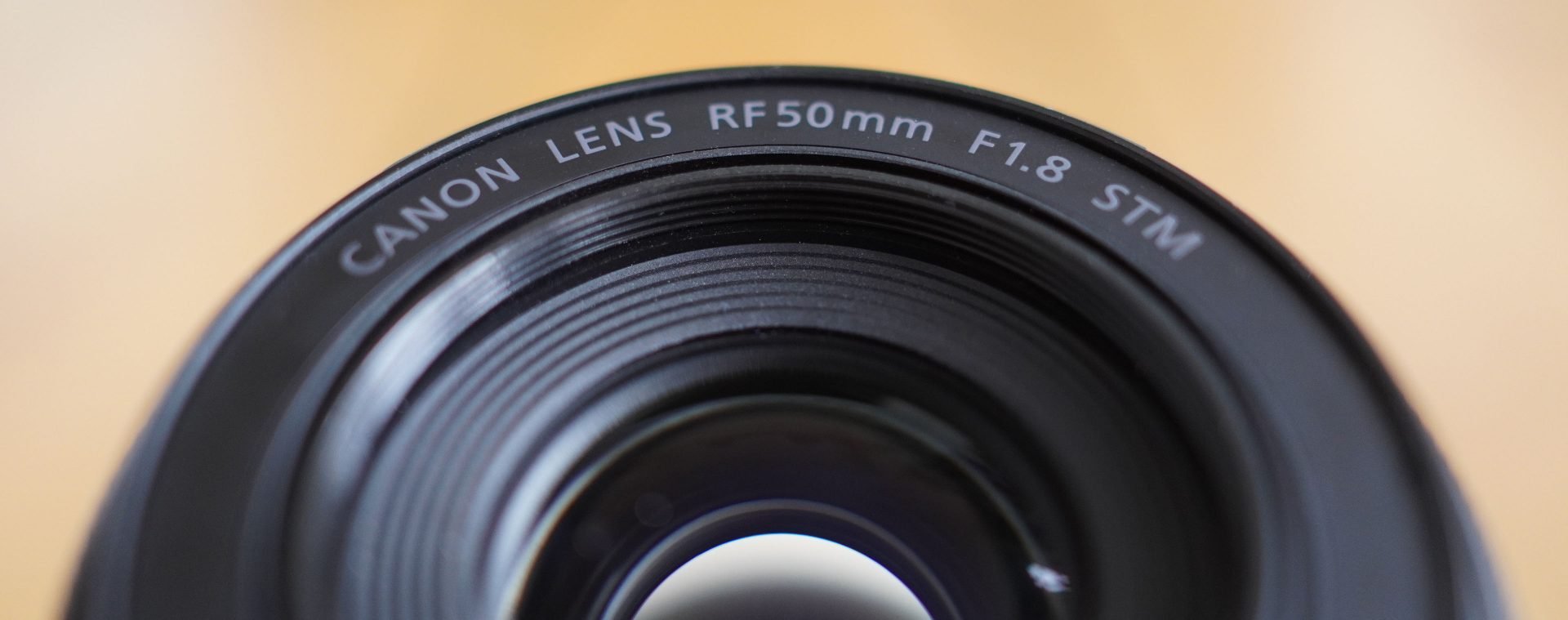
 The Canon RF 50mm f1.8 STM is a low-cost standard lens for the EOS R mirrorless system which, like the EF versions before it, provides an affordable entry into the World of prime lenses, low-light photography and shallow depth-of-field effects. It may cost roughly double that of the EF 50mm f1.8 STM, but still becomes by far the cheapest native lens in the RF system to date, making it tempting for anyone looking for a second lens to complement an existing kit-zoom. It’s smaller than the EF version when you take a mirrorless adapter into account, and while the overall style and rendering is similar, the newer RF version is noticeably sharper across more of the frame when wide-open. That said, it’s not to the same standard of the RF 35mm f1.8 and RF 85mm f2 in my tests, both of which are sharper across more of the frame while crucially delivering far better quality at close range, and enjoying the benefit of optical stabilisation too. But while the RF 35 and 85 are at the cheaper-end of the catalogue, they’re still up to three times more expensive than the RF 50 f1.8. That’s why it - like its predecessors - is known as the thrifty-fifty. More demanding photographers will undoubtedly prefer the quality and close-ups of the 35 and 85, and those who own an EF adapter and don’t mind its size will find the older EF 50 1.8 unbeatable value. But if you’re looking for a compact, fun and flexible prime lens with great potential for blurring effects, you won’t find a cheaper option in the native line-up.
The Canon RF 50mm f1.8 STM is a low-cost standard lens for the EOS R mirrorless system which, like the EF versions before it, provides an affordable entry into the World of prime lenses, low-light photography and shallow depth-of-field effects. It may cost roughly double that of the EF 50mm f1.8 STM, but still becomes by far the cheapest native lens in the RF system to date, making it tempting for anyone looking for a second lens to complement an existing kit-zoom. It’s smaller than the EF version when you take a mirrorless adapter into account, and while the overall style and rendering is similar, the newer RF version is noticeably sharper across more of the frame when wide-open. That said, it’s not to the same standard of the RF 35mm f1.8 and RF 85mm f2 in my tests, both of which are sharper across more of the frame while crucially delivering far better quality at close range, and enjoying the benefit of optical stabilisation too. But while the RF 35 and 85 are at the cheaper-end of the catalogue, they’re still up to three times more expensive than the RF 50 f1.8. That’s why it - like its predecessors - is known as the thrifty-fifty. More demanding photographers will undoubtedly prefer the quality and close-ups of the 35 and 85, and those who own an EF adapter and don’t mind its size will find the older EF 50 1.8 unbeatable value. But if you’re looking for a compact, fun and flexible prime lens with great potential for blurring effects, you won’t find a cheaper option in the native line-up.



